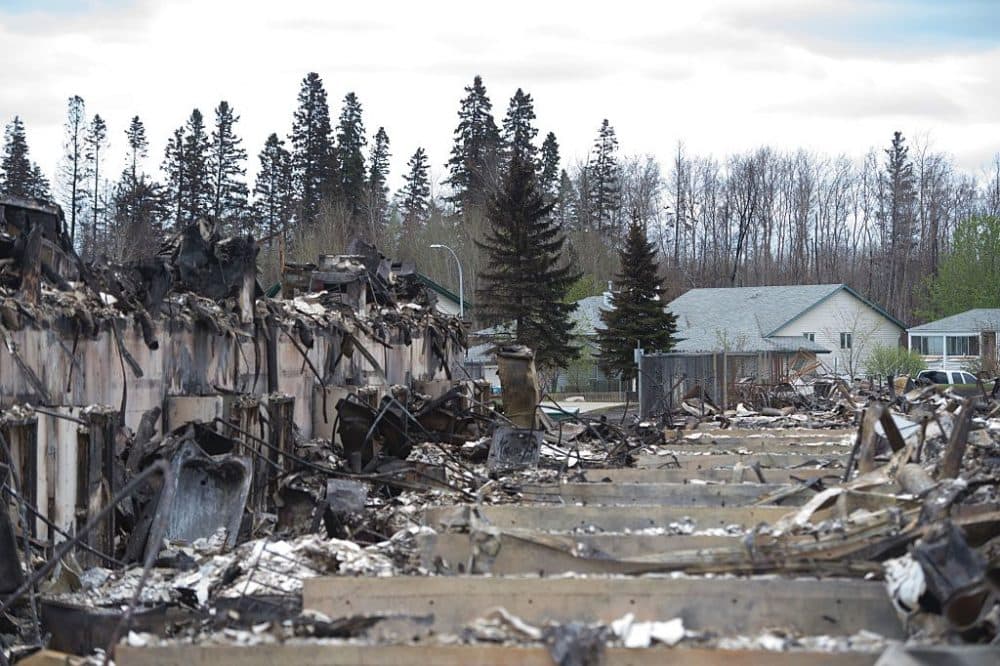Advertisement
Is Climate Change A Factor In Fort McMurray Wildfire?

Two oil companies have resumed limited production in the oil sands outside Fort McMurray, Canada, the area devastated by the largest wildfire in Alberta’s history. The blaze covers more than 620 square miles and is responsible for the evacuation of more than 80,000 people, including those working in the oil camps north of the city. This week’s cooler temperatures and rain have helped slow the fire, which is still classified as "active."
While no single cause has been given for the fire, scientists are pointing to man-made climate change as one of the factors responsible — not only for the Fort McMurray fire, but also others from Kansas and Oklahoma, to Tasmania, Australia.
Mike Flannigan is a professor in the Department of Renewable Resources at the University of Alberta. He joins Here & Now host Meghna Chakrabarti to discuss the connection between wildfires and climate change.
Guest
- Mike Flannigan, professor in the Department of Renewable Resources and Director of the Western Partnership for Wildland Fire Science, at the University of Alberta.
This segment aired on May 11, 2016.